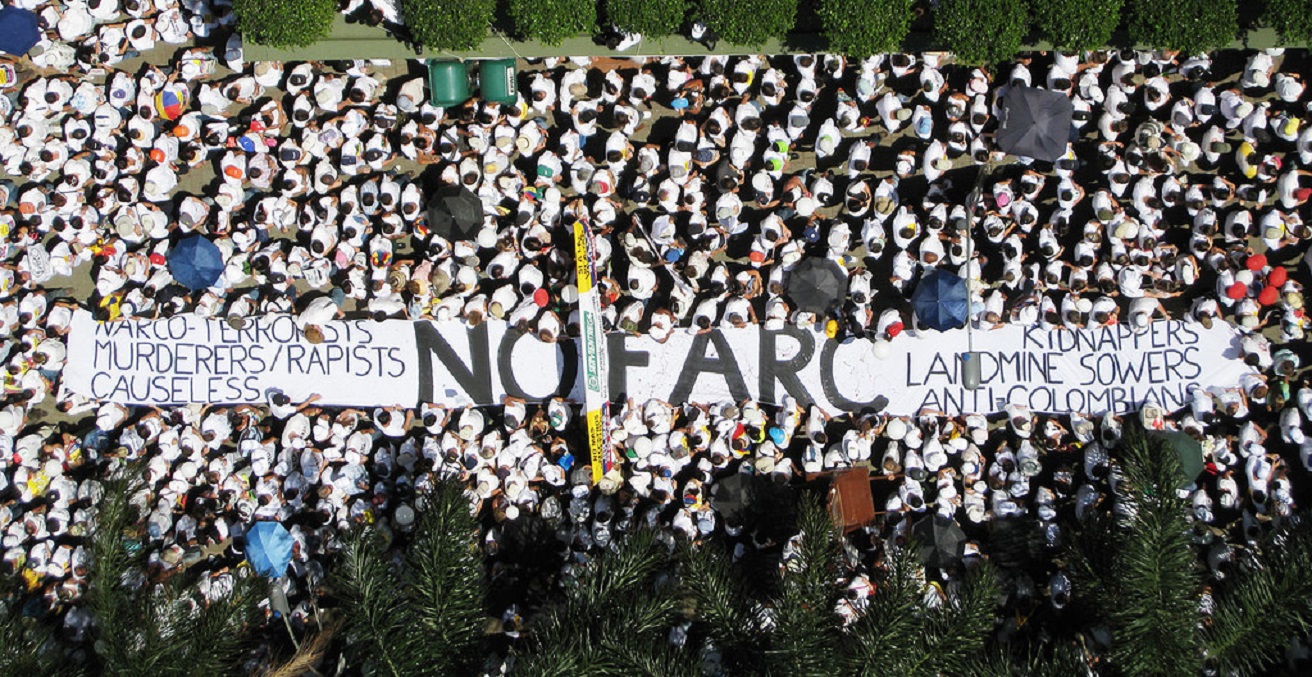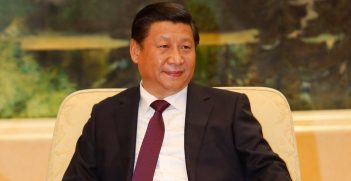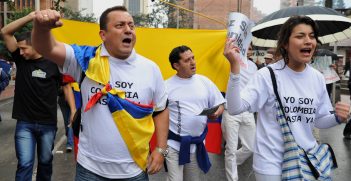The FARC’s Transition to Colombian Democracy

This month, Colombia’s notorious FARC transformed from an armed group to a political party. But in a country where memory runs deep the transition is likely to be difficult.
The 2016 Colombian Peace Agreement marked the end of the 53-year conflict between the Colombian government and the Revolutionary Armed Forces of Colombia (FARC). Nearly a year after the agreement’s ratification, and after formally completing its disarmament, this month the FARC held a week-long political congress. This congress ended on 1 September with a public event in Bolivar Square in the historic centre of Bogotá.
At the congress the FARC was reborn as the Common Alternative Revolutionary Force, reverting to its original historical acronym. The congress also served to decide the leadership of the new party, which consists of 111 members, including 26 women and 10 civilians.
It voted Iván Márquez as the director of the party. Márquez is a FARC leader and member of the secretariat who has had a strong political career within the organisation. In 1986, Márquez was elected to the Colombian Congress as a member of the FARC’s former overt political party, the Patriotic Union (UP). He was also a chief negotiator for the FARC during both Andrés Pastrana’s administration (1998-2002) and the most recent negotiations with President Juan Manuel Santos.
The FARC congress also discussed the political agenda it will follow as it moves into the 2018 electoral cycle, including its objective to continue to push for the implementation of the 2016 peace agreement provisions.
From rebels to political actors
The question then becomes, how can an organisation transition from armed actor to political party with less than a year before the 2018 Colombian elections?
At present, some factors are clear. The 2016 peace agreement provides specific mechanisms to aid in the FARC’s transition from armed group to political party. Amongst other provisions, the agreement provides the FARC with two large concessions, granted on a temporary basis. First, in order to support the FARC’s engagement in future electoral campaigns, the new party will receive an allowance to aid in the transition—a sum equivalent to 7 per cent of the annual operating budget for political movements and parties—between its date of registration and 19 July 2022. The FARC also has access to media and security guarantees under the Comprehensive Security System for the Exercise of Politics.
Most notably, however, the FARC was granted two key concessions on a temporary basis during the two constitutional periods (2018-2022 and 2022-2026). The first is that it is permitted to register its own list of candidates, or in coalition with other political movements or parties, for the senate and house of representative elections. It has already been announced at the congress that the FARC will seek a 2018 election alliance with the Communist Party of Colombia.
The second concession is that while the new party’s listed candidates are to compete under equal conditions, a minimum of 10 seats (five in the senate and five in the house of representatives) will be guaranteed for the FARC political party. In other words, while the FARC is guaranteed a minimum of 10 seats, they must also compete against other parties that are already in the Colombian political spectrum, and Colombian citizens must vote for their candidates.
This latter point is critical as a key challenge the FARC now faces is changing popular opinion towards the organisation. For many Colombians, the FARC is still perceived as a terrorist organisation, evident by the ‘no vote’ narrowly winning the plebiscite on the first 2016 peace agreement. While there are an array of reasons for why the ‘no vote’ won—including issues that had nothing to do with the peace agreement, such as competition between former President Álvaro Uribe and Santos, and debates surrounding the ideology of gender—for many it was more personal.
The FARC has caused lasting psychological damage in both the private and public realms, and has been responsible for an array of atrocities including psychological trauma, forced displacement, sexual violence, recruitment of minors, and the planting of landmines throughout the country. For many ‘no vote’ supporters, there are arguments that the agreement provides too many concessions for the guerrillas, including rewarding the use of terrorism and human rights violations.
There are also issues pertaining to amnesties and transitional justice, with criticisms surrounding the fact that some FARC members will never go to prison, and others will receive only minor penalties. In fact, at the recent FARC congress there were urgent calls to various sectors to expedite the Special Jurisdiction for Peace, which has been set up as part of the 2016 agreement as the mechanism responsible for judging the actors of the conflict.
FARC path towards democracy
However, focus should no longer be concentrated on a discussion of the ‘yes’ and ‘no’ campaigns for the 2016 peace agreement, but rather how the FARC will engage with Colombian democracy. While this remains uncertain, it is important to acknowledge that, despite the FARC being labelled a terrorist organisation or narco-guerrillas, the organisation has always emphasised the importance of political organisation in achieving its overall objectives. This is evident in the fact it entered an overt political party, the Patriotic Union, in the 1986 Colombian elections, although it was eventually destroyed due to intense violence against its members.
Despite this, the FARC continued to promote covert political organisations, including solidarity unions that were made up of networks of sympathetic organisations and individuals throughout the city, and its Clandestine Colombian Communist Party. It means that even though the agreement created a new political party, an overall political organisational framework has always existed.
Moreover, the FARC demonstrates ideological consistency in terms of its political and social objectives. As a movement inspired by Marxism-Leninism and Bolivarianism, the FARC developed its first political agenda—the Agrarian Programme of the FARC-EP Guerrillas—in 1964. This policy was later broadened at the Eighth National Guerrilla Conference in 1993, but has traditionally been the basis of the FARC’s political objectives.
The program outlines specific policy goals, such as establishing a broad system of credit; property titles for tenant farmers, land-hands and peasants; the provision of adequate health services and education for the countryside, including technical training; and the protection of indigenous communities, including the granting of land.
The grievances outlined in this program have influenced negotiations in the past with the FARC, including the 2016 peace agreement where many of these ideas have been included. The FARC has vowed to continue to be a voice for marginalised populations, including the rural population, women, LGBTI and indigenous populations in an attempt to win votes among disenfranchised communities.
The FARC’s new political party has a difficult time ahead. It has a small window of opportunity to mobilise a degree of support before the 2018 election and demonstrate its political legitimacy to the Colombian population. However, it is important to consider that the FARC has always maintained an emphasis on the political framework in achieving its overall objectives under its strategy of combining all forms of struggle.
This will mark a new era in the FARC’s revolutionary struggle, as it continues to push for the peace agreement’s implementation, and the transition from engagement in militancy to engagement in Colombian democracy.
Alexandra Phelan is a researcher, PhD candidate and teaching associate working at Monash University’s Gender, Peace and Security Centre on the Colombian case for the Australian Research Council (ARC) Linkage Project, ‘Towards Inclusive Peace: Mapping Gender Provisions of Peace Agreements’.
This article is published under a Creative Commons Licence and may be republished with attribution.





